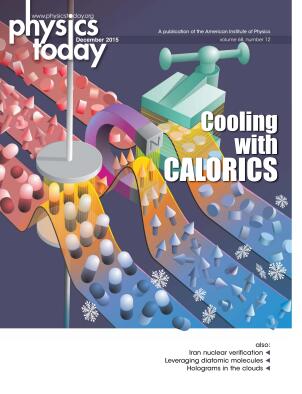Readers offer their own magic moments with John Bell
DOI: 10.1063/PT.3.2998
Bertlmann replies: I am pleased at the positive response of readers to my “Magic moments with John Bell.”
I enjoyed very much the contributions of Charles Clement
I found the comments of Nicholas Bykovetz
Regarding Robert Griffiths’s arguments
The expectation value, assigned to the local hidden-variable theory, is not applied to quantum mechanics but compared with the corresponding quantum mechanical result. Its specific form is excluded via a Bell inequality, in which a certain combination of expectation values is needed. Concentrating on the expectation value alone is not enough to distinguish local hidden variable theories from quantum mechanics; for example, the predictions of quantum mechanics can also be achieved by working with a local hidden variable theory. See reference for a more explicit discussion.
Quantum mechanics as a mathematical formalism is a theory on (mathematical) Hilbert spaces, no matter whether the quantities associated with those spaces correspond to internal degrees of freedom, like spin, or external ones, like the position. In the EPR-Bohm-Bell context, the quantum formalism contains no reference to our three-dimensional space. Nevertheless, experiments are carried out in 3D space. Alice and Bob perform joint measurements of their particles at different, very remote locations. Then this nonlocal feature turns up: A measurement by Alice on the spin of her particle does have an effect— instantaneously—on Bob’s result, in contrast to what Griffiths claims in his comments. Therefore, quantum correlations are locally inexplicable.
I sympathize with some of the comments by Michael Nauenberg
I do not appreciate so much Nauenberg’s example of the helium atom since it distracts from the issue of nonlocality. In fact, it is at macroscopic distances where the “puzzle” arises and not at atomic distances of separation.
I have a confession: I am not the realist one might expect after reading Bell’s article “Bertlmann’s socks and the nature of reality”; the world in its very foundations is much more abstract than we think with our ”anschauliche” (intuitive) concepts, to borrow Werner Heisenberg’s term. My personal feeling is that Bell’s theorem, which reveals an apparent nonlocality in nature, points to a more radical conception whose onset we do not yet have.
References
1. J. S. Bell, Speakable and Unspeakable in Quantum Mechanics, 2nd ed., Cambridge U. Press (2004), p. 67.
2. R. A. Bertlmann, J. Phys. A 47, 424007 (2014). https://doi.org/10.1088/1751-8113/47/42/424007
3. J. S. Bell, M. Nauenberg, in Preludes in Theoretical Physics in Honor of V. F. Weisskopf, A. De-Shalit, H. Feshbach, L. Van Hove, eds., North-Holland (1966), p. 279.
More about the Authors
Reinhold A. Bertlmann. (reinhold.bertlmann@univie.ac.at) University of Vienna, Vienna, Austria.
